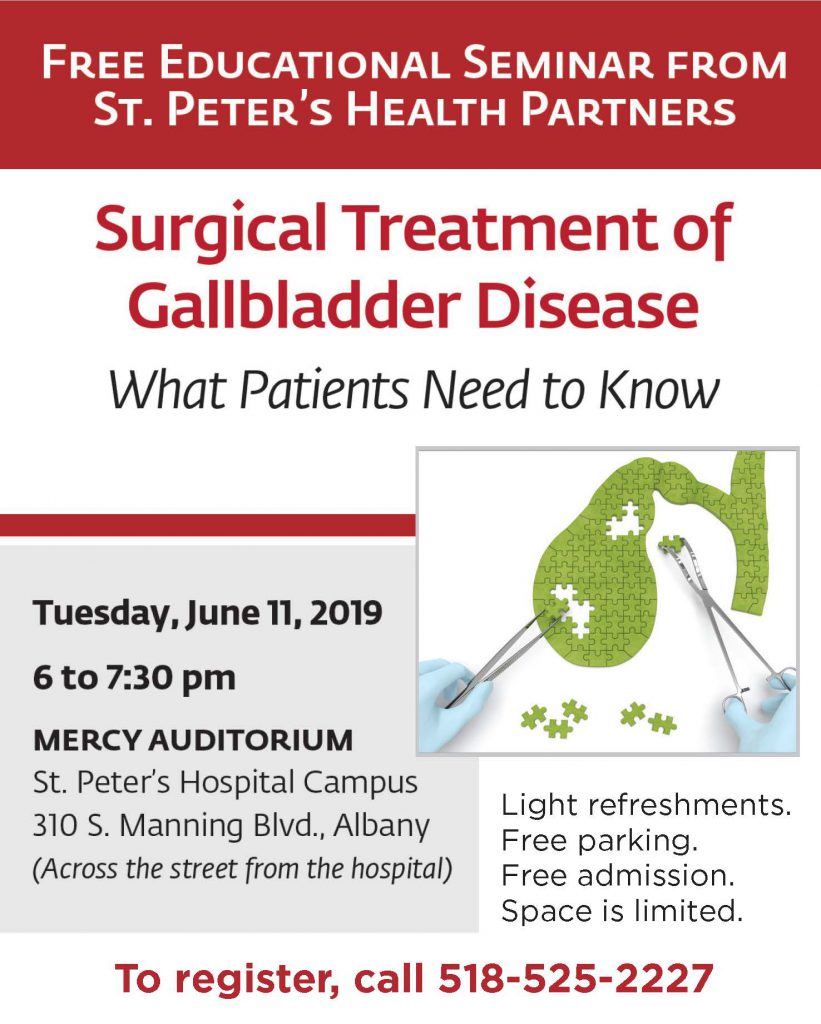
[This piece was written by Rebecca Keim, MD, FACS, a hepatobiliary, pancreatic and general surgeon specializing in advanced laparoscopic and robotic surgery, as well as complex general surgery.]
If you’re one of the 20 million Americans with gallbladder disease, chances are you’ve experienced the not-so-subtle symptoms of a “gallbladder attack”:
- Sudden onset of pain in the upper or right side of the abdomen
- Radiating pain to the right shoulder or back
- Nausea
- Vomiting
These symptoms typically occur after meals, particularly large or fatty meals, and may last for several minutes to a few hours. If you’ve experienced symptoms of a gallbladder attack, it’s important to talk with your health care provider as gallbladder disease will not resolve on its own and could lead to life-threatening complications, such as severe inflammation, infection, jaundice or pancreatitis.
 Your primary care provider may order diagnostic tests or refer you to a gastroenterologist.
Your primary care provider may order diagnostic tests or refer you to a gastroenterologist.
Testing usually includes an ultrasound of the abdomen and bloodwork can help determine the root causes of gallbladder disease. Most gallbladder attacks are caused by gallstones or sludge in the gallbladder.
There are several treatments that can relieve gallbladder symptoms in the short-term. After diagnosis, your doctor may recommend dietary adjustments, such as reducing fat intake and prescribing antibiotics or anti-inflammatories.
As treatments to break up or dissolve gallstones have shown to be largely unsuccessful, most people with gallbladder disease eventually need surgery. Occasionally, stones blocking the main bile duct can be removed by a gastroenterologist via therapeutic endoscopy.
When to See a Surgeon
When other treatments are unsuccessful or symptoms become more frequent, your primary care provider may recommend consulting with a general surgeon. Surgical removal of the gallbladder is a relatively routine procedure that is usually done with minimally invasive surgery. This includes both laparoscopic and robotic approaches to surgery.
Both types are performed through small (1-centimeter or less) incisions using tiny, high-resolution cameras and specialized surgical instruments. These approaches offer greater surgical precision and, in turn, great benefits to patients like reduced pain, shorter hospital stays and faster recovery.
A minimally invasive approach may not be appropriate for all patients. Those diagnosed with complicated gallbladder disease, or who have had previous upper abdominal surgery, may not be candidates.
A thorough evaluation by your health care provider, in coordination with a surgeon trained in minimally invasive surgery, can determine the appropriate procedure for you.
St. Peter’s General Surgery and St. Peter’s Hepatobiliary & Pancreatic Surgery is located at 319 South Manning Blvd, Suite 304 in Albany. For more information, please call 518-525-5206.
For more information on the free health seminar on gallbladder disease scheduled for June 11, click HERE. To register, please call 518-525-2227.





